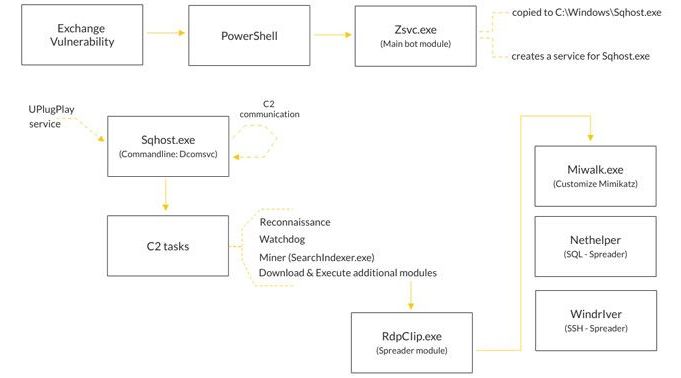Cryptocurrency can help Africans access the global financial system, writes Akon, artist and founder of Akoin.



Attackers are exploiting the ProxyLogon Microsoft Exchange Server flaws to co-opt vulnerable machines to a cryptocurrency botnet named Prometei, according to new research.
“Prometei exploits the recently disclosed Microsoft Exchange vulnerabilities associated with the HAFNIUM attacks to penetrate the network for malware deployment, credential harvesting and more,” Boston-based cybersecurity firm Cybereason said in an analysis summarizing its findings.
First documented by Cisco Talos in July 2020, Prometei is a multi-modular botnet, with the actor behind the operation employing a wide range of specially-crafted tools and known exploits such as EternalBlue and BlueKeep to harvest credentials, laterally propagate across the network and “increase the amount of systems participating in its Monero-mining pool.”

DAYTONA BEACH, Fla. — An anonymous donor has made it easier for dogs at the Halifax Humane Society to find a forever home thanks to a cryptocurrency investment.
Halifax Humane Society Community Outreach Director Barry Kukes said the woman stopped by the shelter Saturday and paid all the adoption fees for dogs ready to be adopted out.
“Basically, had made a very wise investment in some cryptocurrency and had a windfall and said it changed her life that she wanted to do something nice,” he said.


Interesting initiative (US Smart Cities) that could be applied to space cities.
Jeffrey Berns, CEO of Nevada-based Blockchains LLC, envisions a city where people not only purchase goods and services with digital currency but also log their entire online footprint — financial statements, medical records and personal data — on blockchain. Blockchain is a digital ledger known mostly for recording cryptocurrency transactions but also has been adopted by some local governments for everything from documenting marriage licenses to facilitating elections.
The company wants to break ground by 2022 in rural Storey County, 12 miles (19 kilometers) east of Reno. It’s proposing to build 15000 homes and 33 million square feet (3 million square meters) of commercial and industrial space within 75 years. Berns, whose idea is the basis for draft legislation that some lawmakers saw behind closed doors last week, said traditional government doesn’t offer enough flexibility to create a community where people can invent new uses for this technology.
“There’s got to be a place somewhere on this planet where people are willing to just start from scratch and say, ‘We’re not going to do things this way just because it’s the way we’ve done it,’” Berns said.

Cybersecurity specialists report that a hacker is selling real-time access to a single-use password system, allowing cybercriminals to access Facebook, Twitter, Google, Amazon, Microsoft, Signal, Telegram accounts, among many others without having to obtain multi-factor authentication codes.
This report should be taken seriously, as a related attack could engage billions of users. In turn, cybersecurity experts point out that this is the consequence of using servers that handle OTP requests from online service users.
The first reports on this hacker were published by researcher Rajshekhar Rajaharia, who mentions that the hacker offers 50 GB of data extracted from multiple sources and webshell access to the OTP generating platform. The seller asks for about $5000 USD in cryptocurrency, although Rajaharia notes that initially the hacker planned to sell this information for about $18000 USD.

The launch of the first prototype of the new form of Russia’s national currency, the digital ruble, could be just several months away, the head of the State Duma Committee on the Financial Market, Anatoly Aksakov, has told RT.
“The digital ruble is currently the highest form of money,” the official said in an interview to RT. He said that the central bank is set to publish the roadmap for development of the digital currency soon and its prototype should be ready by autumn.
“The tests of this form of money may start at the end of 2021 or at the beginning of 2022,” he went on, adding that the digital currency may be used for domestic transactions in two to three years.

US payments firm Visa announced Monday that it will enable the use of USD Coin to settle payment transactions on its platform.
Visa piloted the payment option via payment platform Crypto.com, and plans to allow more partners the same route later this year.
“Crypto-native fintechs want partners who understand their business and the complexities of digital currency form factors,” Jack Forestell, Visa’s executive vice president and chief product officer, said in a statement.

